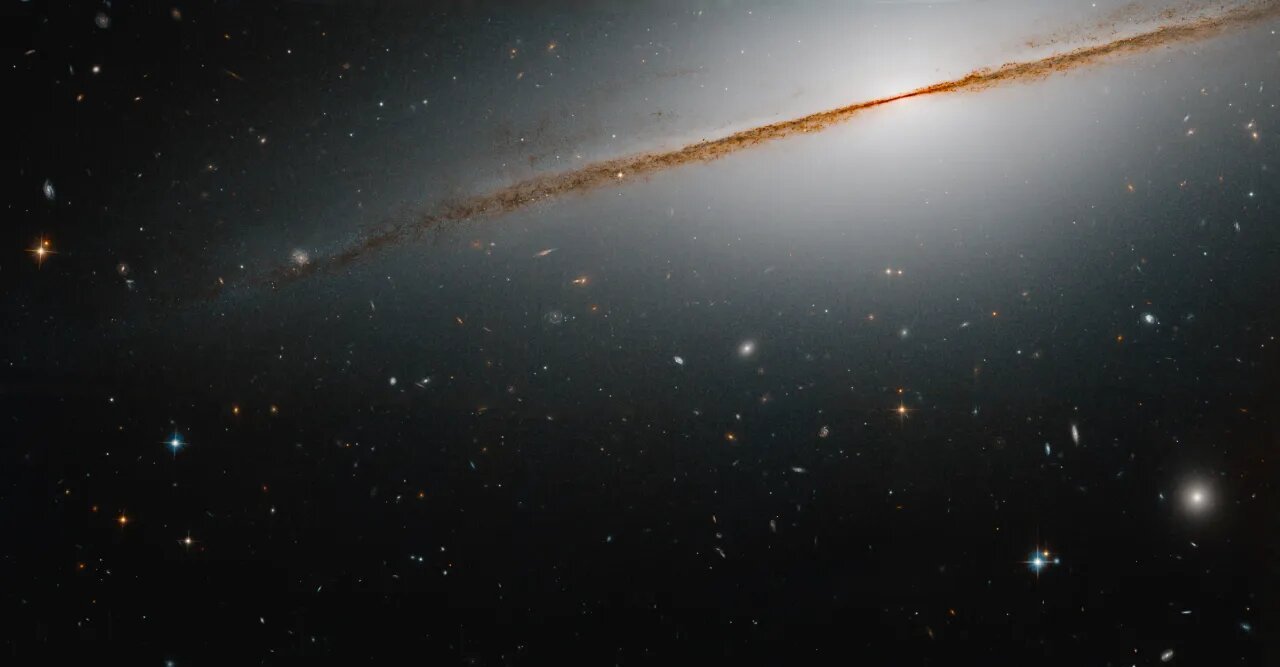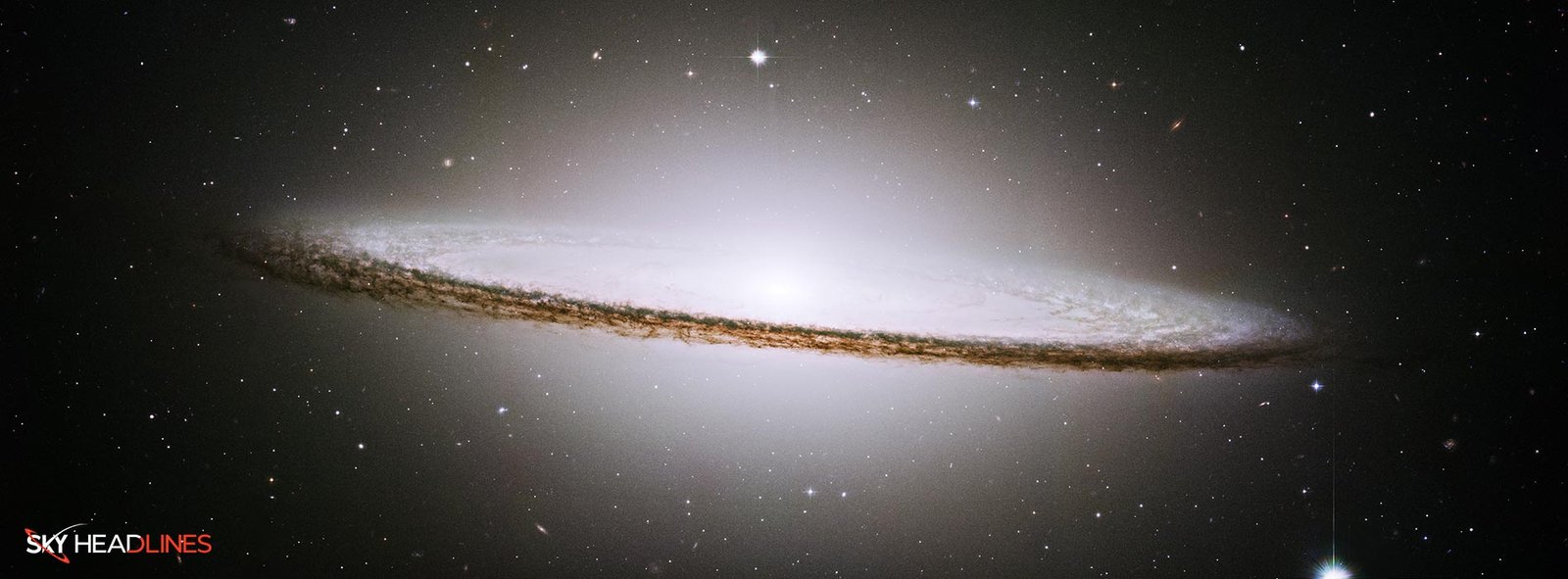Introduction
The universe is a vast expanse filled with countless celestial wonders, each holding its unique mysteries and beauty. One such marvel that has fascinated astronomers and stargazers alike is the Sombrero Galaxy. But did you know that there’s another galaxy that closely resembles it? Recent images from the Hubble Space Telescope have introduced us to the “Little Sombrero,” officially known as NGC 7814 or Caldwell 43, depending on the astronomical catalog. In this blog, we will embark on a journey to uncover the secrets and allure of the Sombrero Galaxy and its smaller but no less captivating counterpart.
Structure and Morphology of the Sombrero Galaxy
Galactic Core
The Sombrero Galaxy is categorized as an SA(s)a spiral galaxy, signifying that it lacks a bar structure and exhibits tightly-wound spiral arms. The core is exceedingly bright, and current observations strongly suggest the presence of a supermassive black hole with an estimated mass equivalent to 1 billion Suns. The enormous gravitational pull of this black hole is likely responsible for the intense luminosity observed in the galactic nucleus.
Dust Lane and Halo
A dark, opaque dust lane surrounds the core, separating it from the halo. This dust lane is mainly composed of complex organic molecules and plays a critical role in the galaxy’s ability to form new stars. Surrounding the dust lane is a luminous, elliptical halo made up of globular clusters, older stars, and cosmic debris. The halo itself has proven to be a treasure trove for astrophysicists, offering clues to the galaxy’s age, formation, and evolutionary history.
Formation and Evolution
The galaxy’s formation is thought to have occurred through a sequence of galactic mergers and accretion of intergalactic material. The unusually high number of globular clusters in its halo supports the theory that M104 has ‘absorbed’ smaller galaxies over time. These cannibalistic tendencies are in line with how many massive galaxies evolve, continually reshaping themselves through the cosmic ballet of gravitational attraction and collision.
The Hubble Telescope’s Contributions
The Hubble Space Telescope has played a monumental role in augmenting our understanding of the Sombrero Galaxy. Launched in 1990, Hubble has provided some of the most detailed and high-resolution images of M104 ever captured. These images have revealed intricate details of the galaxy’s structure, including its spiral arms, central bulge, and the dark dust lane. The high-quality data obtained from Hubble has also allowed astronomers to perform spectroscopic analyses, leading to more accurate estimates of the galaxy’s mass, age, and the properties of its supermassive black hole.
Significance of the Sombrero Galaxy in Astrophysical Research
The Sombrero Galaxy is a linchpin in various sub-disciplines of astrophysics. Its unique structural features make it an ideal subject for studies focusing on black hole mechanics, galactic winds, star formation rates, and the chemical compositions of galaxies. The data collected has also helped in calibrating various astrophysical models, bridging the gap between theoretical predictions and observable phenomena.
Observational Insights into the Sombrero Galaxy
The Sombrero is an attractive target for both amateur and professional astronomers. In amateur telescopes, the galaxy appears as a bright nucleus encased in a softer halo. However, the full splendor of the galaxy, including its dark dust lane and globular clusters, can only be truly appreciated through larger telescopes and long-exposure photography.

Little Sombrero: A Twin in the Cosmos
While the Sombrero Galaxy has long captured our imagination, a recent image from the Hubble Space Telescope has unveiled a similarly stunning celestial object—the Little Sombrero. This spiral galaxy earned its nickname due to its striking resemblance to the Sombrero Galaxy. Although they appear different in brightness and orientation from our vantage point, NASA has confirmed that they are nearly identical in size.
Situated about 40 million light-years away, the Little Sombrero spans 80,000 light-years in width and has been around for billions of years, only slightly more distant than the Sombrero Galaxy’s 28 million light-years. The galaxy showcases a luminous central bulge, a slender disk laden with dust, and a radiant halo of gas and stars. Originally captured in 2006, the image has been revisited as part of ongoing sky surveys, providing invaluable insights into the galaxy’s star demographics and evolutionary trajectory.
Conclusion:
The Sombrero Galaxy and its recently highlighted twin, the Little Sombrero, stand as symbols of the majesty of the cosmos. Their unique morphologies and the groundbreaking observations made possible by the Hubble Space Telescope make them endlessly fascinating subjects for both the casual stargazer and the professional astrophysicist. As we gaze upon their distant forms, we are reminded of our insatiable curiosity and our unending quest to understand the universe. In the realm of sociological and theoretical exploration, their existence invites us to ponder our place in the grand tapestry of existence and our relentless pursuit of knowledge.
In the words of Carl Sagan, “Somewhere, something incredible is waiting to be known,” and the Sombrero Galaxy and the Little Sombrero are just two of many incredible discoveries awaiting humanity’s inquisitive spirit.





